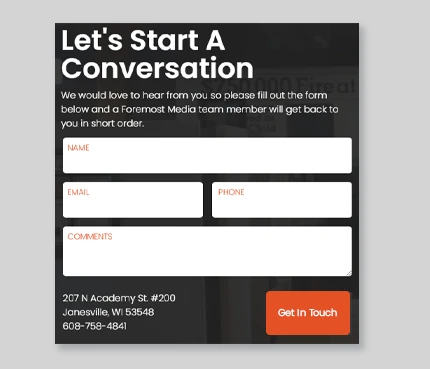What Fields Should My Form Include?

The purpose of a web form is to collect the information required to assist your potential or current customers. For general inquiries, you’ll likely request the following as required fields:
- First Name
- Last Name
- Email
- Phone Number
- Comments
If you have a support or quote form, you may have more required fields to allow you to collect all the information required to assist the customer. There is a fine balance between making it easy for the customer to fill out the form and getting necessary information. Think along the lines of “it’s crucial that I have this information to properly respond” compared to “it would be nice to have this information”.
Are there other methods of collecting form data?
Receiving email notifications with the form data isn’t the only method to get the information submitted on your website’s forms. Various form modules and plugins can also feed data to services such as Salesforce, MailChimp, Act-On HubSpot and Constant Contact to name a few. If you’re looking for a means to level up your use of client information, reach out to our team and they’ll be happy to answer any questions you have to help you meet your digital marketing goals.